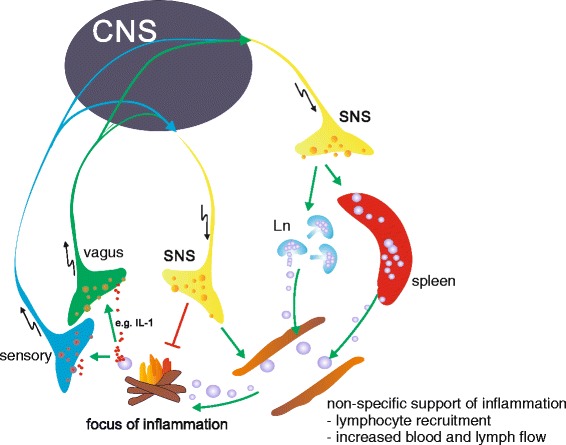Figure 1.

Basic neuronal anti-inflammatory reflex. Local inflammation (the fire) is detected by vagal and sensory nerve fibers, which express receptors for inflammatory mediators, like interleukin (IL)-1β (red dots). An afferent signal is generated and transmitted to the brain (central nervous sytem (CNS)), which in turn leads to activation of the sympathetic nervous system (SNS), which has a complex impact on inflammation. Local release of SNS neurotransmitters, like norepinephrine, at the site of inflammation or in secondary lymphoid organs has a net anti-inflammatory outcome. On the other hand, non-specific immune stimulatory processes on a systemic level are supported, like recruitment of leukocytes, increased blood and lymph flow, but also increasing antigen processing and presentation and provision of energy-rich fuels. Ln, lymph node.
